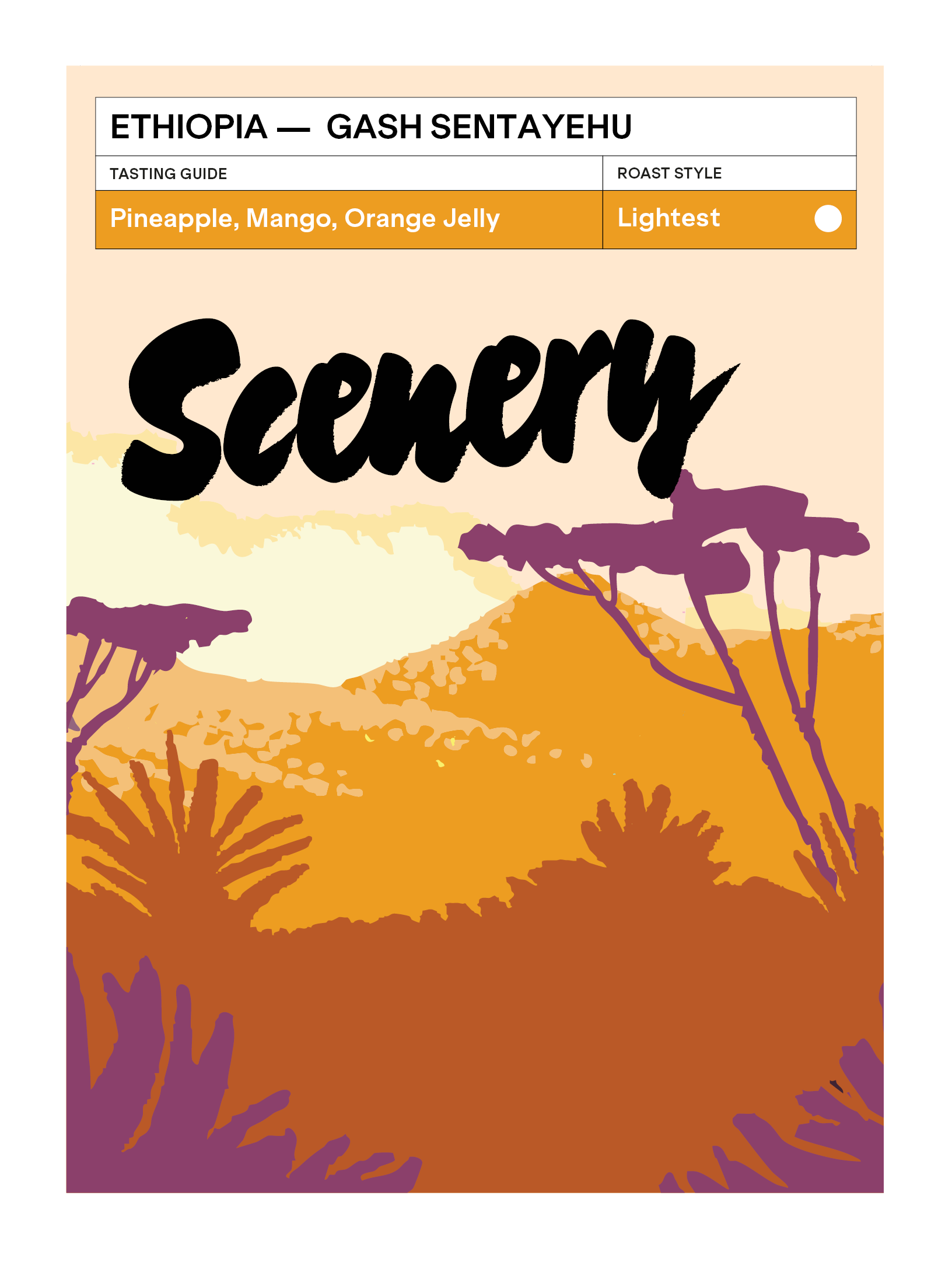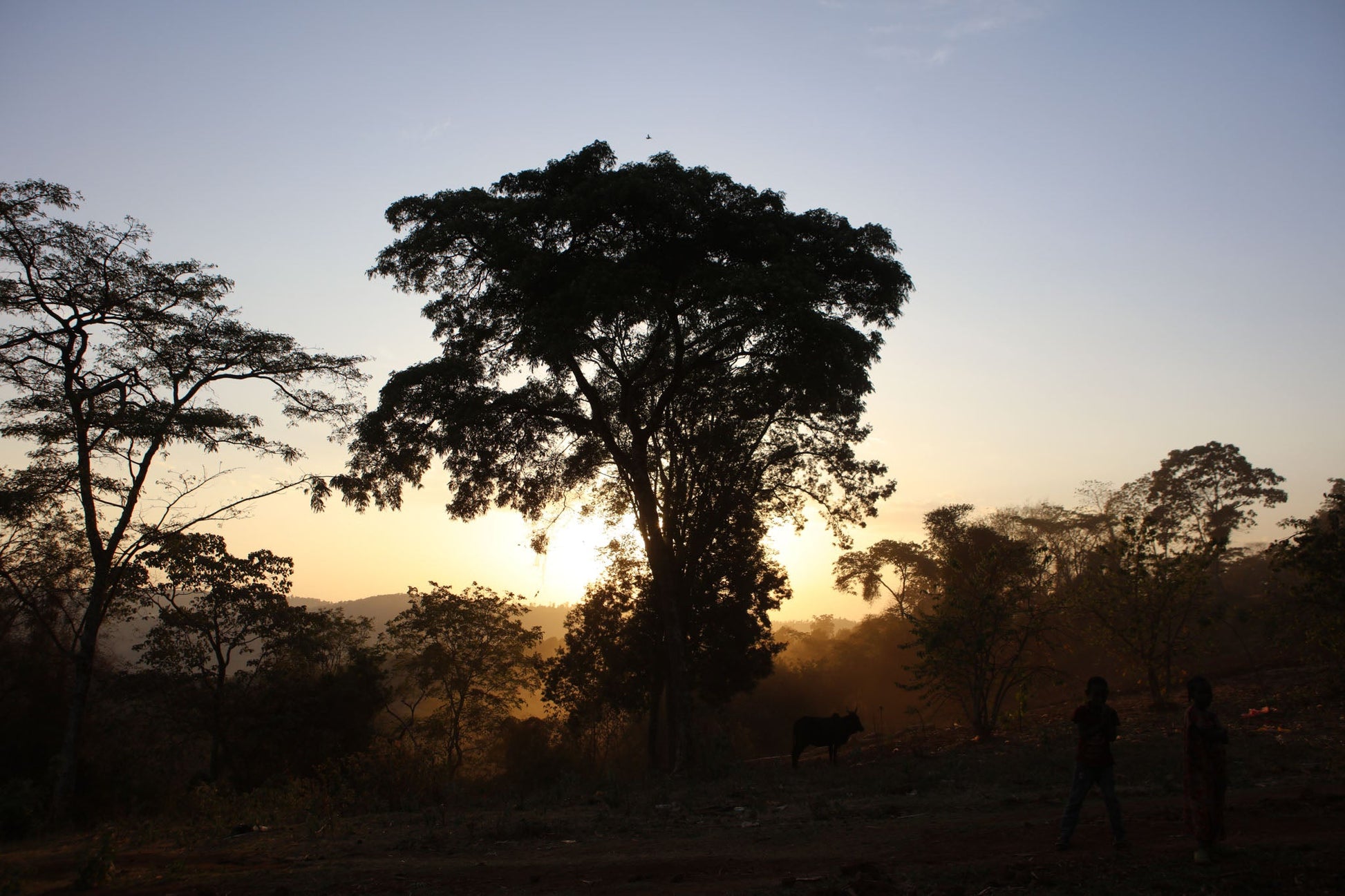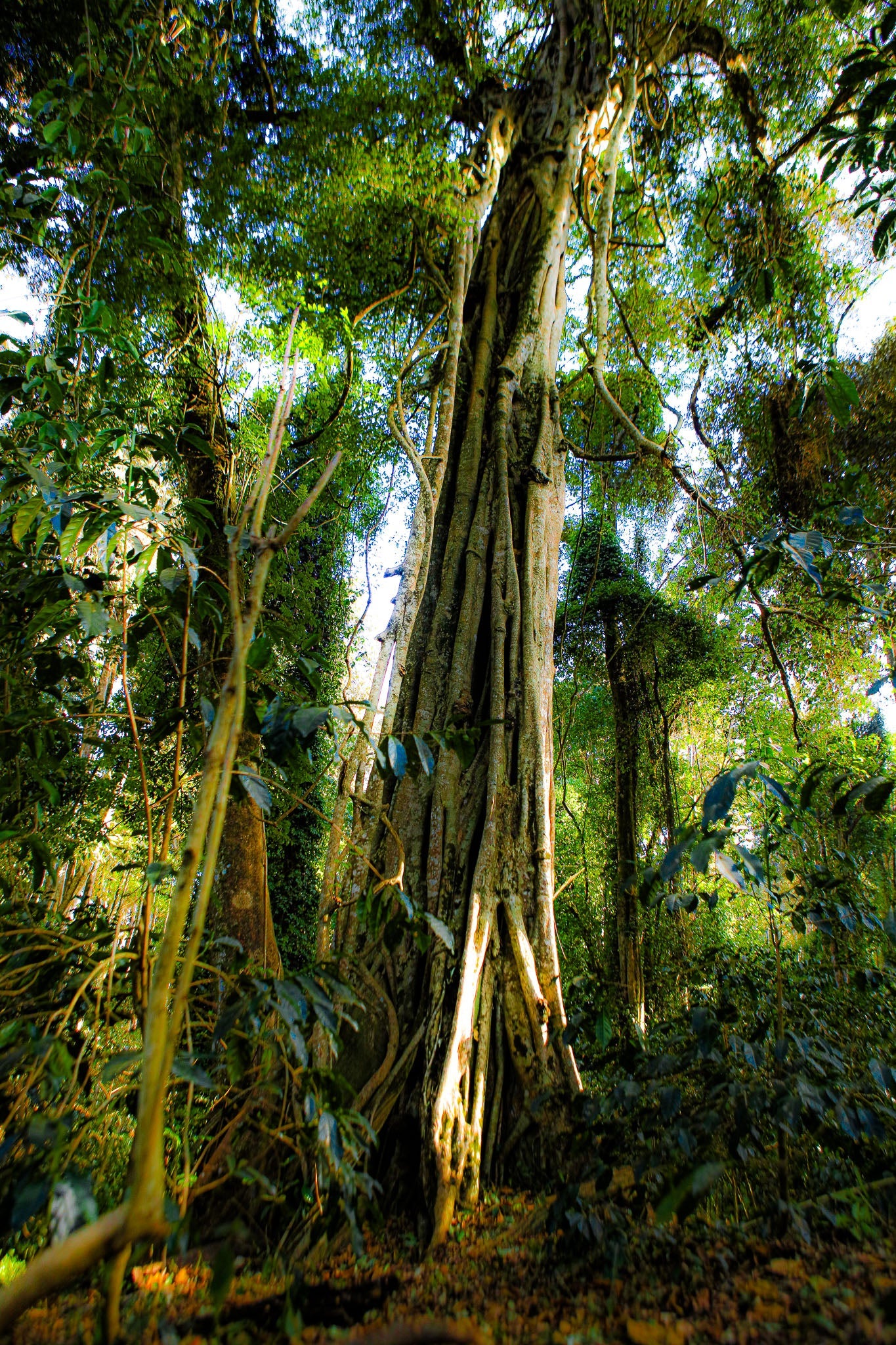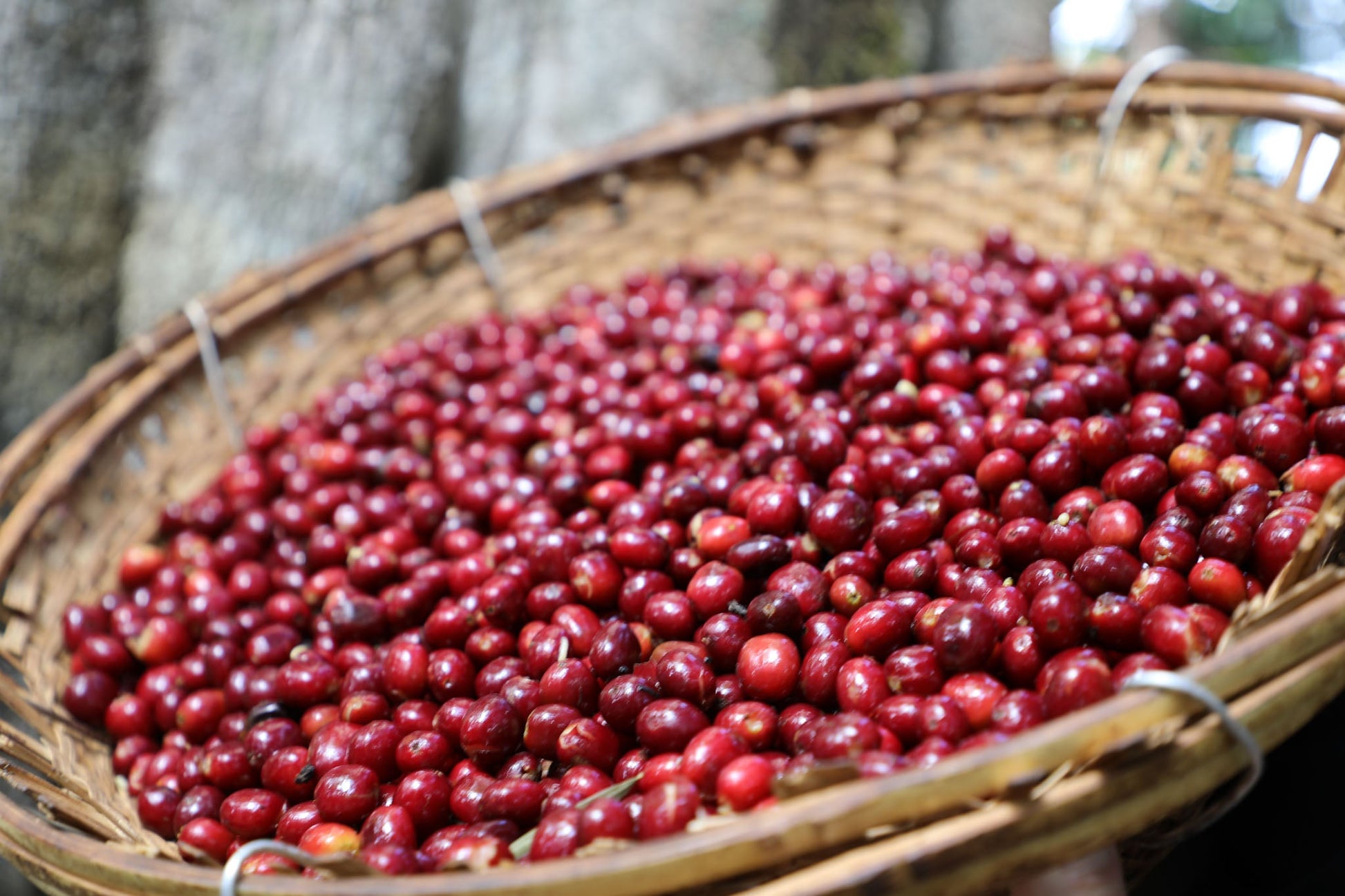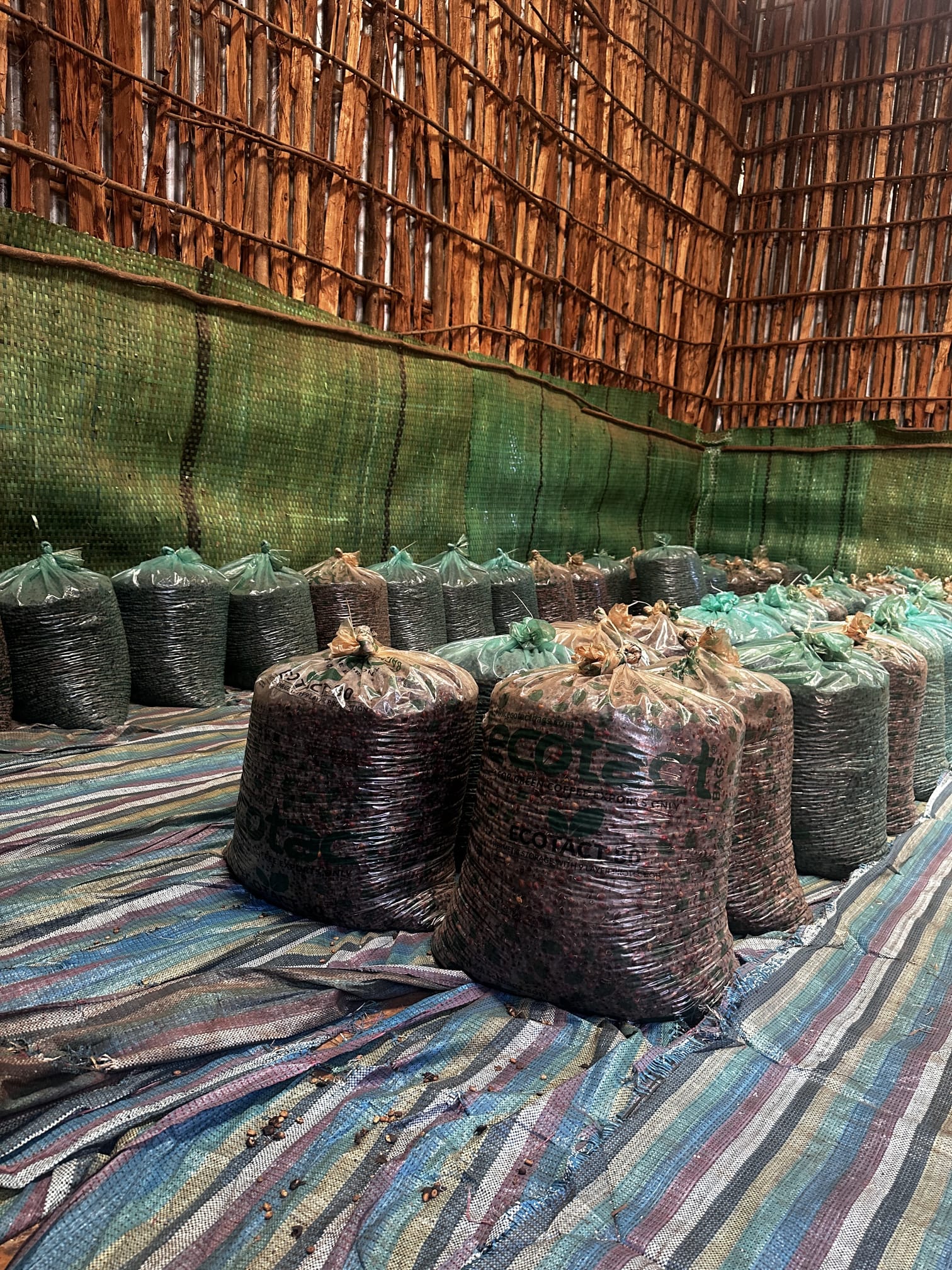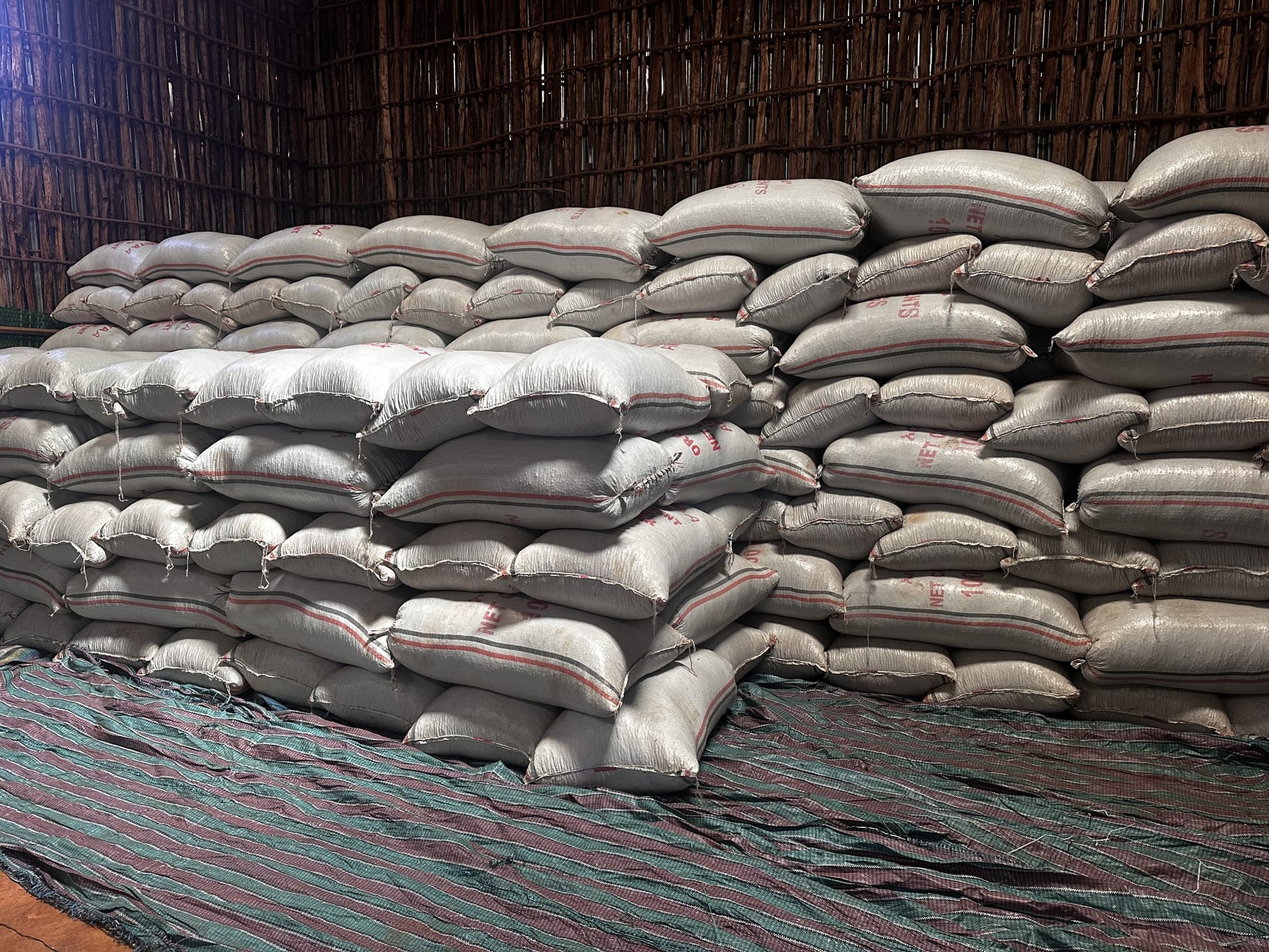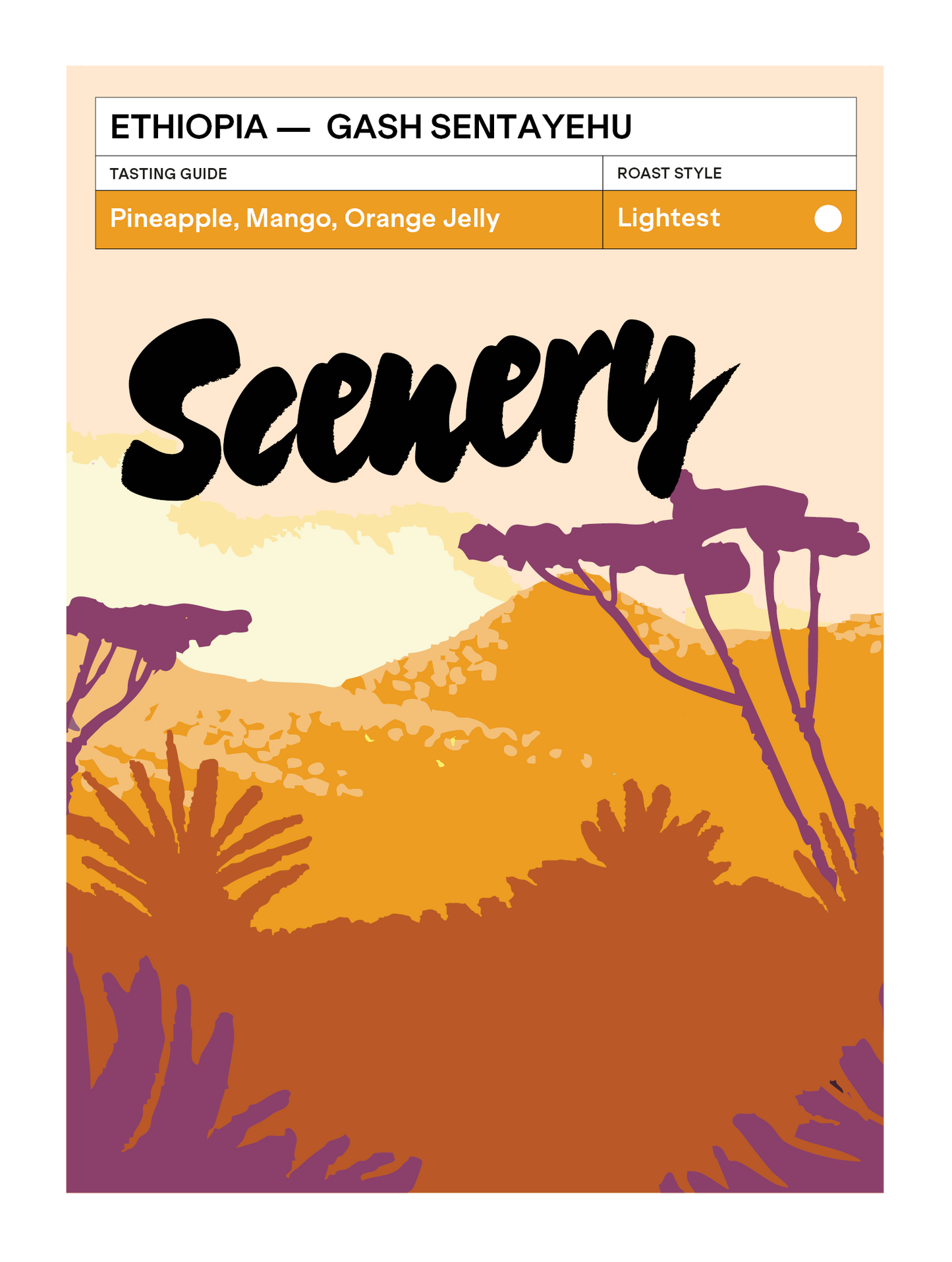
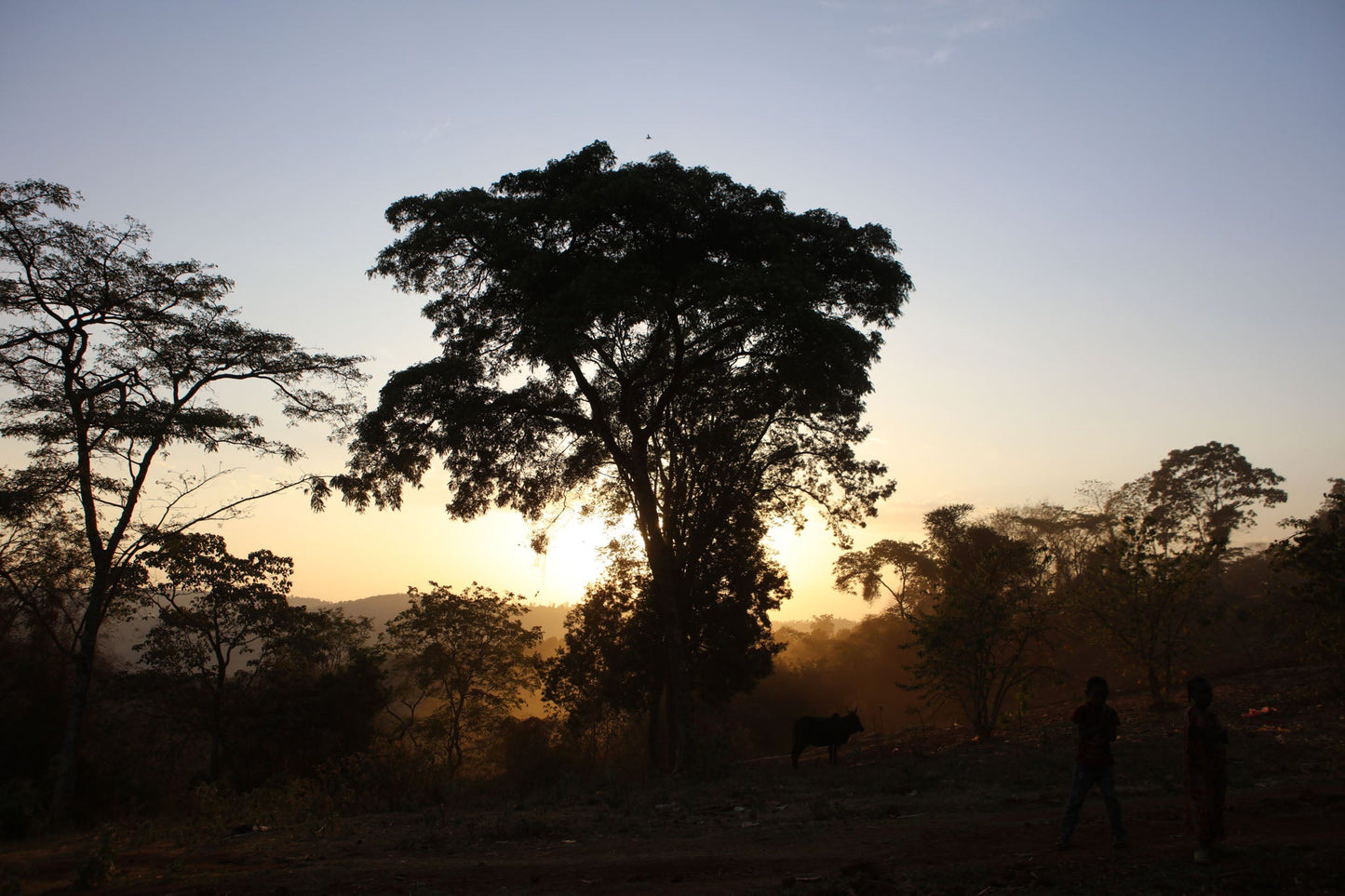
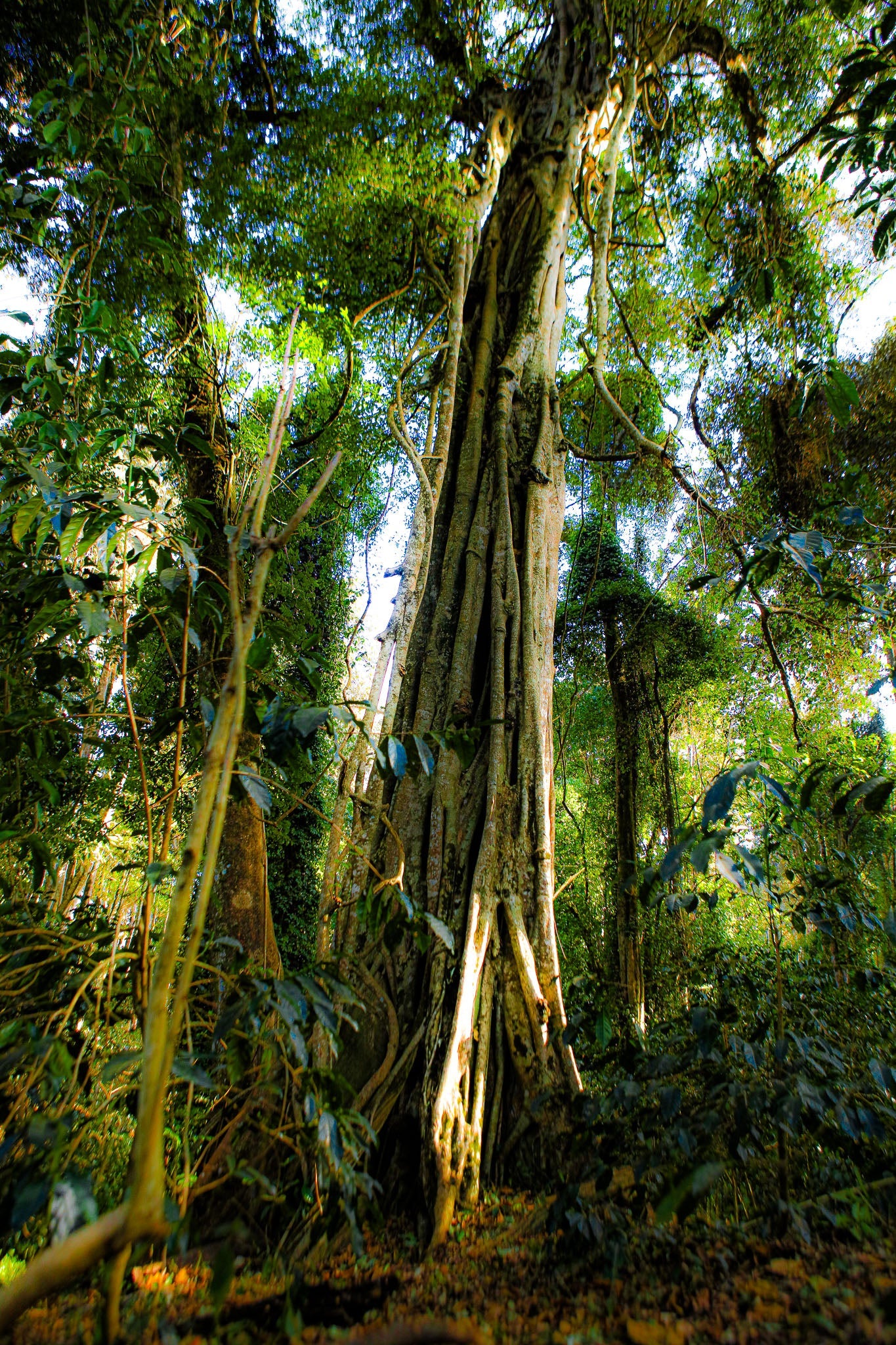
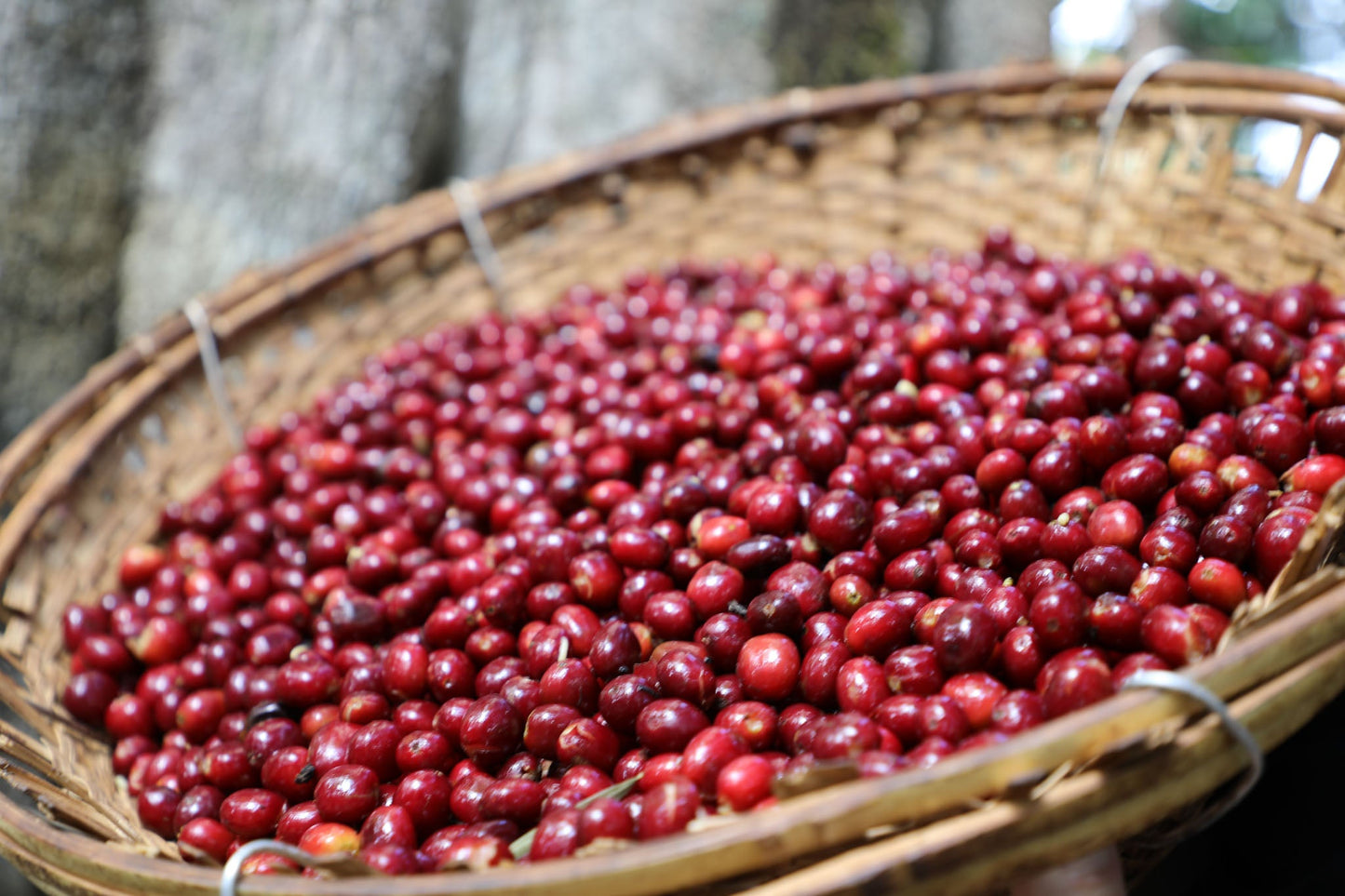
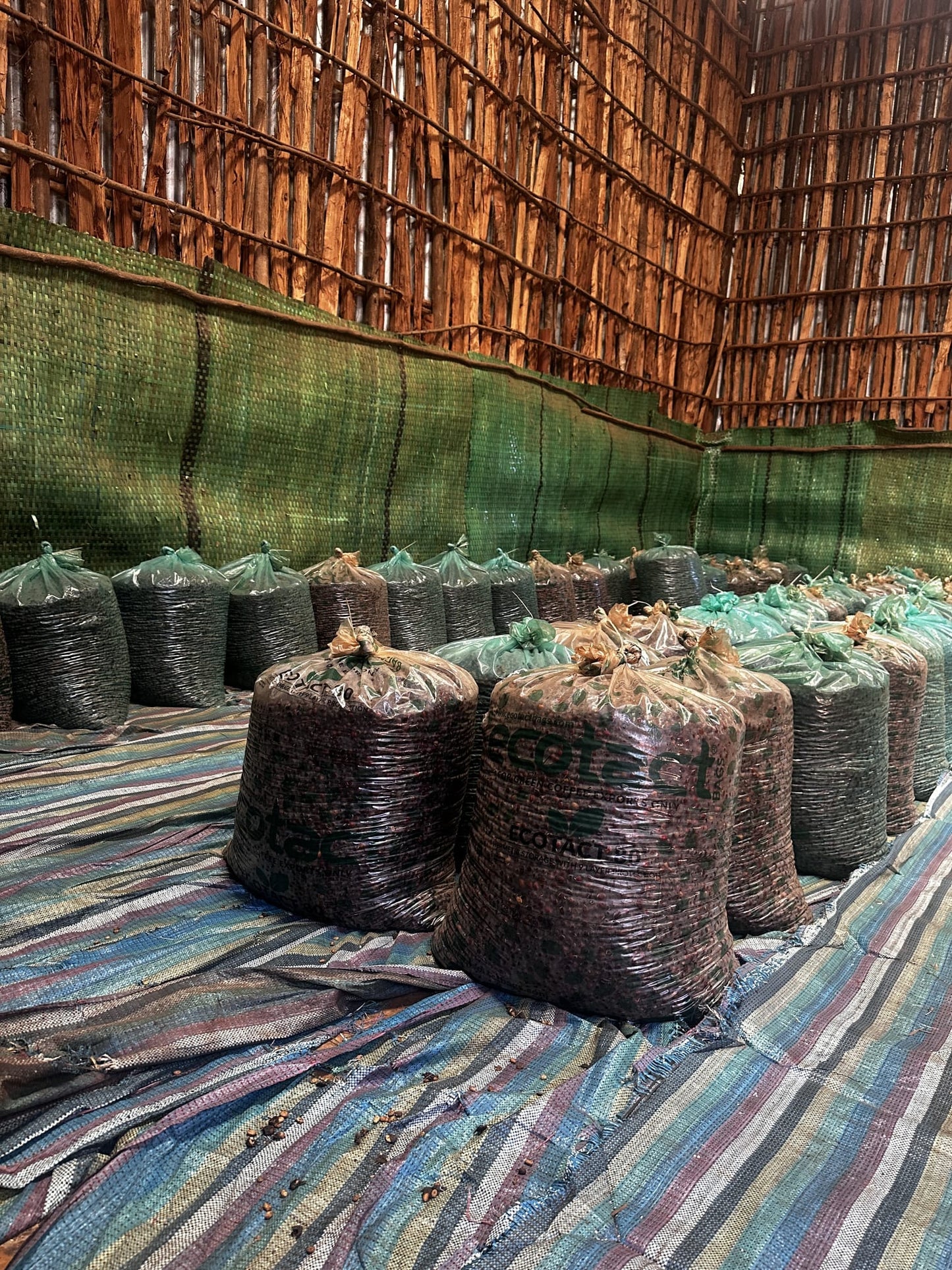
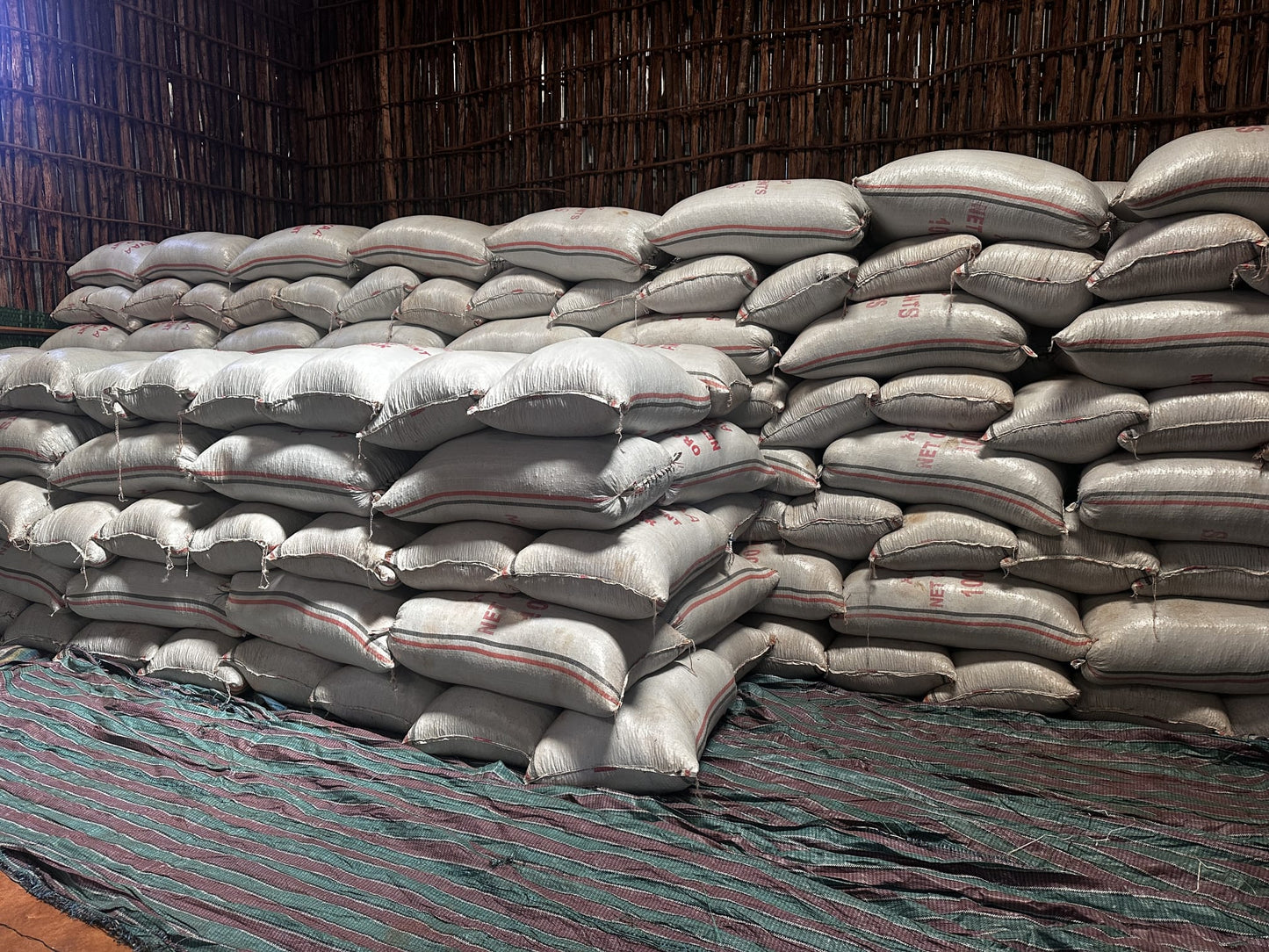
Brew Guide:
Best Brewed with: Filter/Espresso
Lightest Roaster Influence: A fast roast and as little time in development as possible to keep the coffee light, bright, very aromatic, without pushing any deeper process-led character,
Best Rested: 3-4 weeks
Filter: 62g/L, 96°C when fresh but when well rested you can go down to 92-93°C
Espresso: 18g/48g/20-22s. Brilliant turbo/soup.
We’re tasting: Super tropical aromas - pineapple, passionfruit, mango. In the cup the aromas carry through, with peak season ripe apricot, oodles of alpine strawberry, vanilla crème mousseline, orange jelly & guava (almost like bougie trifle) leading a fizzy/effervescent body and zippy acidity. Cup character is clean and clear without funk, and super juicy.
Traceability
Country of Origin: |
Ethiopia |
Region: |
Megadu, Shakisso Woreda, Guji |
Producer: |
Gash Sentayehu |
Farm: |
Sentayehu farm + Sentayehu mill |
Variety: |
JARC 74112/74158, Wild Guji Megadu (a local landrace), |
Elevation: |
2000 - 2100 MASL |
Process: |
Anoxic Natural: Ripe cherries picked and floated, with underripes skimmed (floating also reduces exterior microbial load and cools the cherries to a consistent starting temperature), before placing the cherries in sealed clean + shaded grain-pro bags for a 96 hr ferment in an anoxic environment. Post ferment, the cherries are laid out to dry slowly as a natural on raised beds over 15 - 20 days |
Import Partner: |
Direct with Bette Buna (facilitated via Falcon) |
Harvest |
Crop 24/25 Arrived UK: 14/07/25; Second year working with Bette Buna |
The Story
Ethiopia's commodity exchange system, established in 2008, eliminated traceability for most production. Coffee was graded, sorted, and blended by broad regional zones. This improved price transparency for farmers, but buyers could no longer identify specific farms or washing stations. The 2017-2019 reforms changed this by allowing private exporters to own washing stations and bypass the exchange, cooperatives to export directly, and smallholders to obtain export licences. These reforms enabled modern traceable single producer coffee, which changed quality incentives - farmers producing exceptional coffee now receive direct recognition and premiums, rather than having lots blended into regional bulk lots.
Anoxic fermentation involves sealing coffee cherries in airtight tanks to remove oxygen and create anoxic conditions (commonly, but incorrectly referred to as "anaerobic") over several days as carbon dioxide builds up. In this oxygen-free environment, different microbial communities activate and metabolic pathways shift dramatically, creating complex flavour compounds and precursors that don't develop in traditional open-air fermentation.
At Bette Buna, Dawit Syoum and processing manager Sisay Tadesse pioneered higher technical intervention processing at their wet mills, adding value and creating unique and differentiated lots.
Bette Buna's Coffee Campus transfers this knowledge through a comprehensive paid programme covering farming, processing methods, sensory training, quality grading, and export procedures. The company provides physical infrastructure including raised beds, processing stations with fermentation equipment, and technical support. Most smallholders lack the specialised equipment, expertise, and financial security to take processing risks independently - but by socialising infrastructure whilst maintaining individual lot identity, Bette Buna enables farmers to experiment without catastrophic financial risk.
The out-grower model follows a structured progression. Farmers bring cherries to Bette Buna's processing stations for hands-on training. As their skills develop, Bette Buna provides equipment for use at their own farms. Farmers process coffee to proper moisture levels and sell it as dried cherry or parchment, and receive recognition as producers with traced, named lots rather than "anonymous" contributors to regional blends (Bette Buna are a notable exception in Ethiopia by providing a list of all out-growers who contributed cherry to any given lot). At Megadu, anoxic fermentation facilities are accessible to trained farmers like Gash Sentayehu, which demonstrates how infrastructure sharing democratises access to premium processing whilst maintaining the individual traceability that specialty buyers demand - and after processing his cherry in this style at Megadu last year, this year Mr Sentayehu has taken the process in-house, on his own farm.
The business model shifts value capture. In traditional models, farmers sell wet cherry within hours of picking and receive commodity prices with no quality differentiation, and at best may receive a secondary quality based payment when a lot is exported. Traditional cooperatives aggregate and blend thousands of farmers' coffee into regional lots where identity is nearly completely lost.
Selling dried parchment or cherry husk gives producers information about quality before sale and a stronger bargaining position - when farmers control processing and maintain individual traceability, they access substantially higher premiums. Bette Buna provides infrastructure whilst identifying individual farmers separately, collecting cherries from specific producers, processing in small identified batches, and exporting under individual names. Payment is direct, premium-based on quality, and transparently tied to final sale prices.
With most production coming from smallholders farming less than 2 hectares, the structural disadvantage of anonymity perpetuates poverty. The outgrower model breaks this cycle through direct market feedback and transparent pricing. When farmers control processing and maintain individual identity, value increases substantially, and farmers transform from anonymous price-takers into recognised brand-holders. Transparency and traceability are not marketing tools but mechanisms for economic justice rooted in farmer prosperity, and while we're not making any claims to truly moving the needle by buying a small fraction of a microlot, we can use our position as roasters to help build Mr Sentayehu's brand as an individual producer, which ultimately can be one of the best ways to gain and retain value. We're anti-gatekeeping - we would rather there be competition for the lots we wish to buy, helping the producers we purchase from not only sell more coffee but achieve higher prices due to the demand.
- Choosing a selection results in a full page refresh.
- Opens in a new window.

